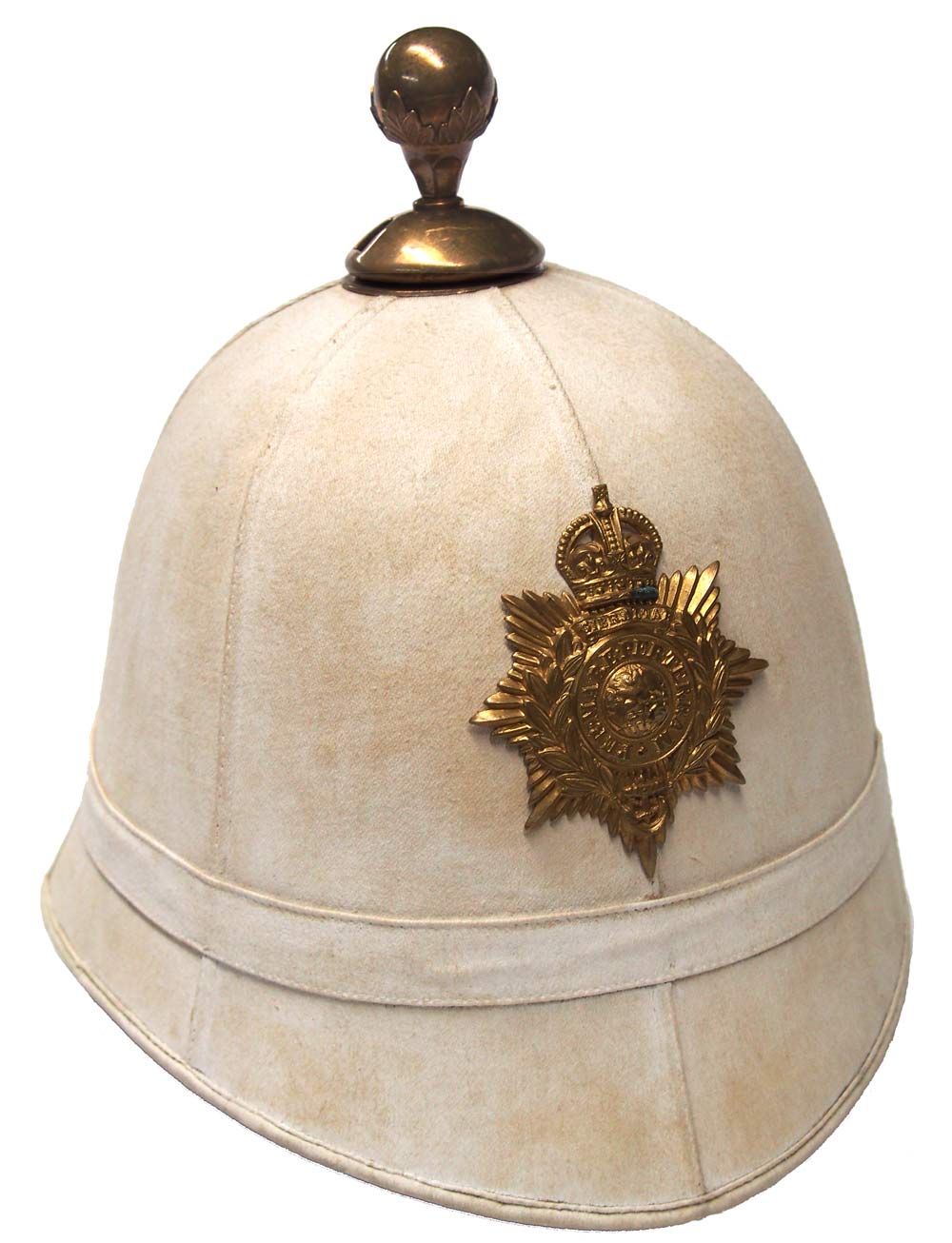
By 1905 the British Army had widely adopted the Wolseley pattern sun helmet for use in tropical stations, yet it was only then that the Royal Marine Artillery and Royal Marine Light Infantry adopted a white “colonial pattern” helmet for wear at both home and overseas thus making it a “Universal Pattern Helmet.”
Until 1905 the RMA and RMLI also followed the standard procedures of wearing different helmets at home and abroad. The “blue cloth” Home Service Helmet had been first issued to the RMLI in 1878 to replace the shako, while the RMA adopted the same helmet in 1879 to replace the fur busby. This helmet was thus of similar design as that worn by the British Army.
In tropical stations the RMLI and RMA were often fitted out with the Foreign Service Helmet, and in the Sudan campaign in the 1880s these helmets were light gray with a little gray paggari that matched the tropical uniform.
The Universal Pattern Helmet was introduced for both the RMA and RMLI and it featured a ball fitting instead of a ventilator cap, while the Royal Marine badge was worn on the front. It featured an eight-pointed star, and was smaller than the helmet plate worn by the RMLI.
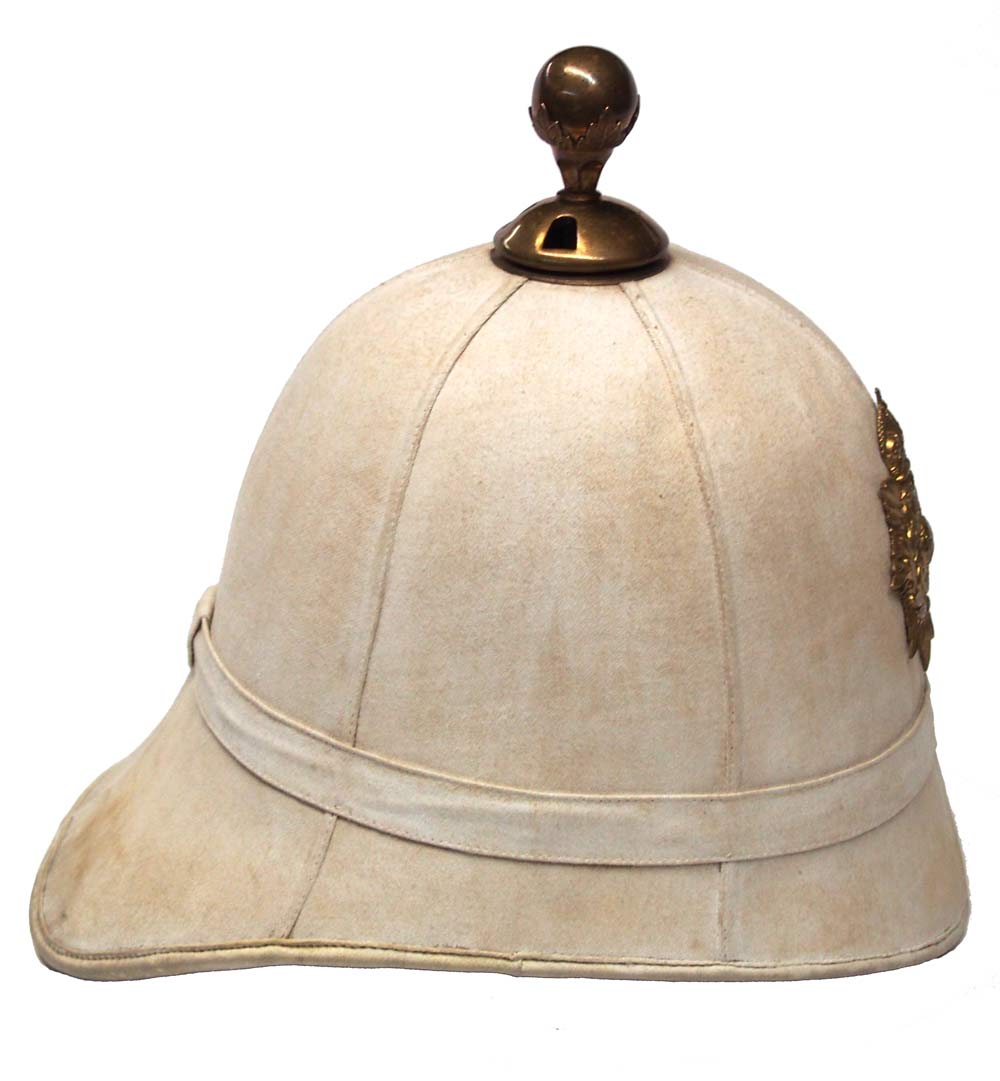
The Royal Marine Universal Pattern helmet was worn without puggaree – a tradition carried over to the Wolseley helmet.
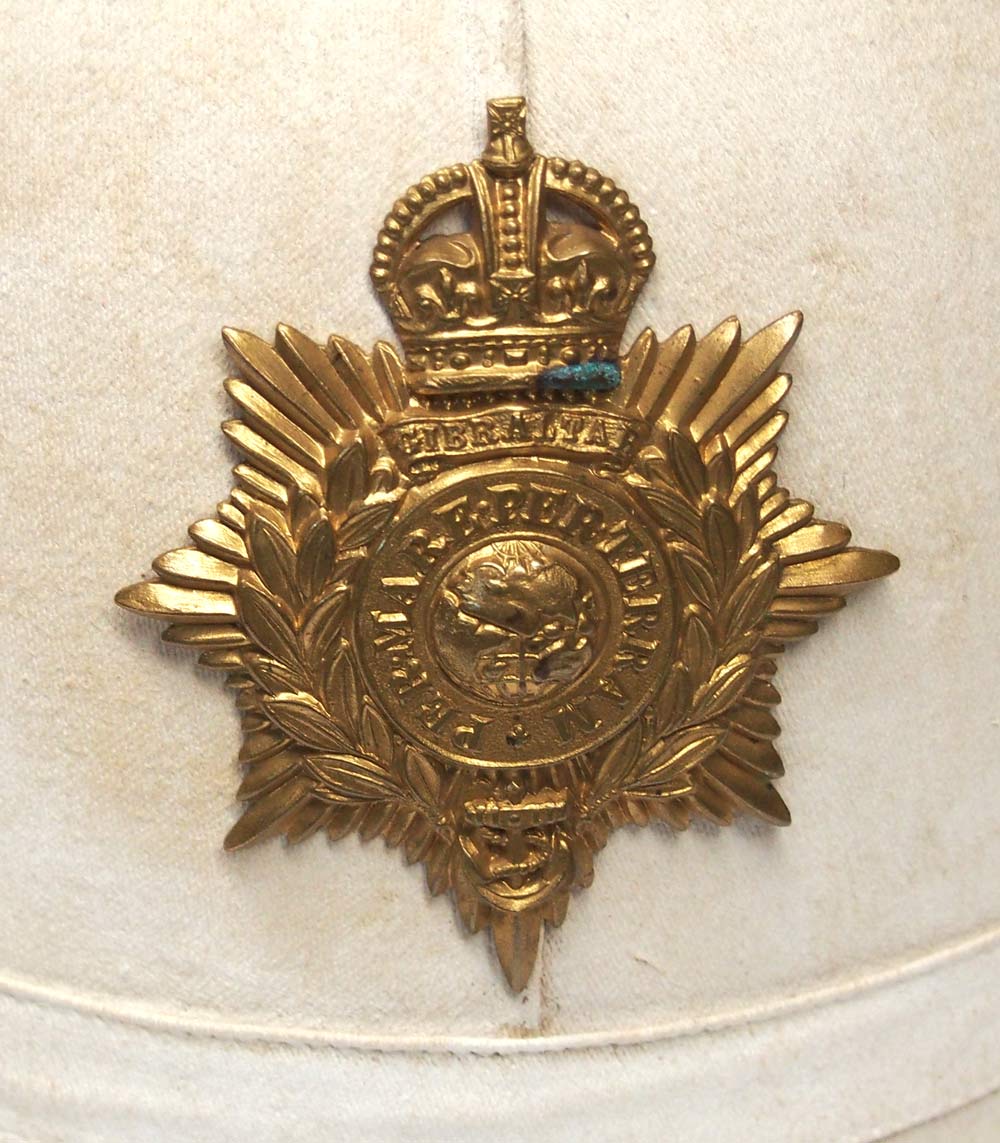
The badge of the RMLI is the same as that worn on the Wolseley pattern helmets.
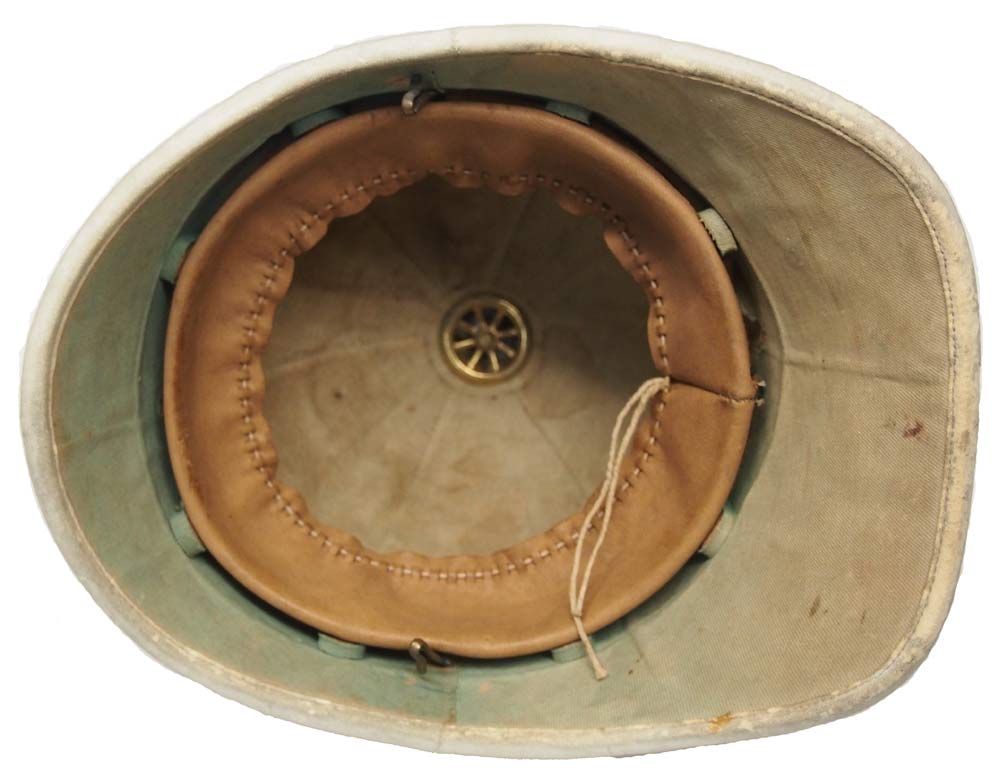
The interior of the Royal Marine Universal Pattern Helmet.
The use of the Universal Pattern Helmet was short lived and in 1912 the Royal Marines adopted the Wolseley Helmet, which has remained in use for ceremonial occasions ever since.The same badge has also remained in use – with the change from King’s Crown to Queen’s Queen in 1952.
This helmet has the register number 2618 stamped inside the helmet. According to the soldier’s Enlistment card this was John William Vickers of the Royal Marines Divisional Train. He was transferred to the RASC in May 1917.
This use of a single helmet for home and abroad was of course not unique to the Royal Marines, as the Canadian militia too had replaced the darker Home Service Helmet for a single Universal Pattern.
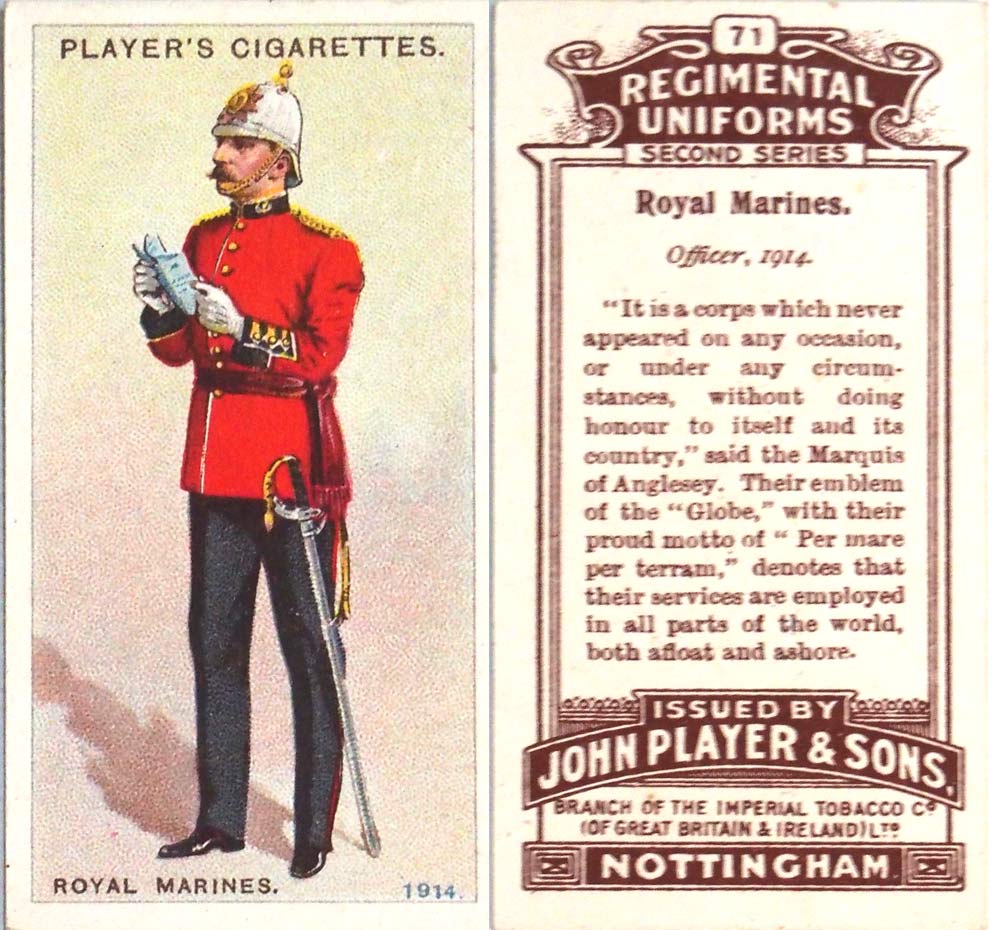
An interwar tobacco card issued by John Player & Sons. While the RMLI had adopted the Wolseley pattern helmet in 1912 this card suggested the Universal Pattern Helmet was still in use in 1914.
The Royal Marine Universal Pattern Helmet was thus a headgear of the final years of the Pax Britannica and it is unlikely these were worn in combat. Yet due to the short time period in which these were worn, this pattern may be among the rarest of British military tropical helmets.
Peter Suciu
June 2019

Very interesting and enlightening history🙂👍